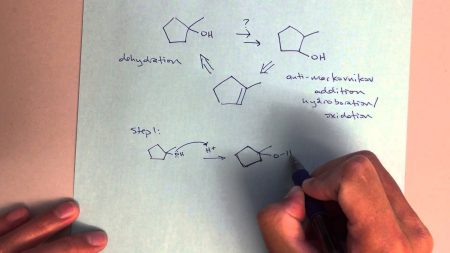March 30, 2018 – A deep learning computer program developed by University of Muenster researchers is being used to create small organic molecules that may one day lead to new materials and drug compounds. In what is being described as a significant invention a paper presented this week in the journal Nature entitled, “Planning chemical syntheses with deep neural networks and symbolic AI,” authored by Marwin Segler, Mike Preuss and Mark Waller, describes their AI tool.
Segler is a Doctor of Philosophy and doctoral student in organic chemistry at the University of Muenster. His colleague, Preuss, is a post-doctoral business informatic expert in AI. And Waller is a chemist on the faculty of the University of Shanghai. The three created an algorithm using deep-learning neural networks to synthesize the knowledge base of single-step organic-chemistry reactions, some 12.4 million in all, representing the total sum of all reactions ever published in the field.
The AI subsequently is able to learn on its own and predict chemical reactions for any single step in synthesizing a new molecule. It also can deconstruct a molecule to break it down into its starting reagents, an expertise known as retrosynthesis, often the method of choice for organic chemists when trying to invent new drug compounds. And better yet the AI tool shows that it makes predictions 30 times faster than humans.
Segler describes the implications of the use of the tool for retrosynthesis.
“Retrosynthesis is the ultimate discipline in organic chemistry. Chemists need years to master it – just like with chess or Go. In addition to straightforward expertise, you also need a goodly portion of intuition and creativity for it. So far, everyone assumed that computers couldn’t keep up without experts programming in tens of thousands of rules by hand. What we have shown is that the machine can, by itself, learn the rules and their applications from the literature available.”
So how does the tool work?
Having every single-step organic chemistry reaction in its knowledge base, the AI can devise variants in molecular design as if it were playing a game of chess or Go. It works through its move choices using the legacy of its organic chemistry knowledge and then selects the best variant to produce a desired molecular end result.
Just how good is it?
In a blind study, when its work was shown to 45 experienced organic chemists from China and Germany along with work done by humans, the experts could not distinguish the AI results from that done by humans.
So what does this mean for the field of organic chemistry?
The inventors aren’t alone in describing the implications of what the tool means to pharmaceuticals and material science. Described as a landmark, it should accelerate the discovery of new drugs and new materials.
AI tools continue to demonstrate their value in the advancement of biological, chemical and medical research.
Just yesterday I wrote about an AI that finds adenomas in colonoscopies faster and with greater accuracy than the leading gastroenterologists. It soon will have mastered the ability to distinguish non-cancerous versus cancerous polyps in real-time, nipping colorectal cancer in the bud. It is only a matter of time before other AI tools will accelerate invention, identification, and diagnosis in all these areas of research.
















